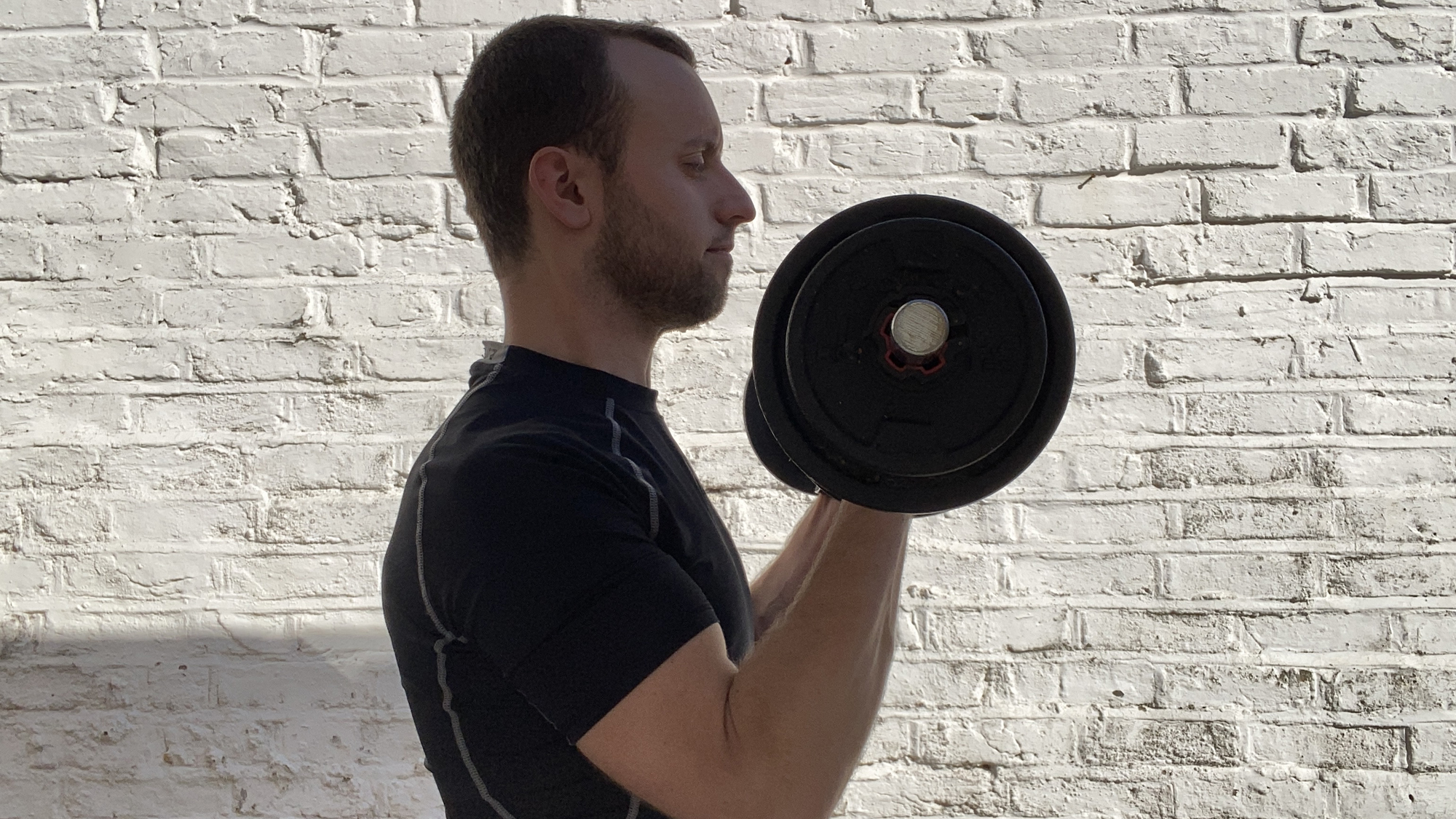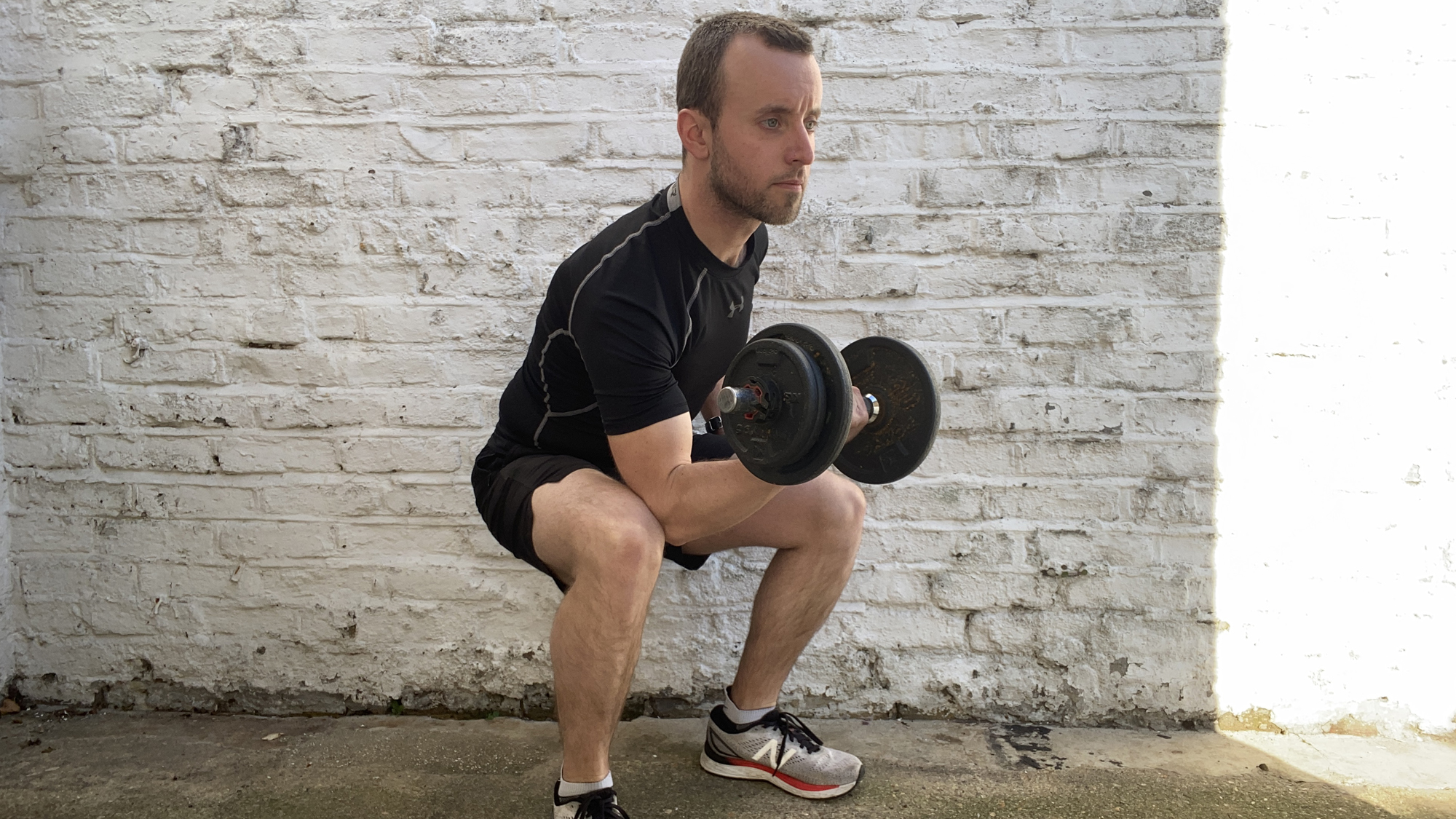I tried this 15-minute dumbbell arm workout, and now I won't ever need the gym again
This short routine keeps the intensity high to pack in plenty of muscle-building moves


I don't always have hours to spend at the gym or working out at home, even with the best intentions. So when I'm short on time, what I really need is a quick blast that'll train my muscles and help me get stronger.
Even if you've switched to exercising at home, so you don't have to commute to the gym, between work and social events, it's hard to dedicate time to a workout using a set of the best adjustable dumbbells like I used to.
Then I came across Fraser Wilson's 15-minute dumbbell arms workout on YouTube. He's a personal trainer well-known for short, practical, muscle-building at-home routines.
Wilson's videos are incredibly popular—this session has racked up almost 5.5 million views—though it's easy to see why. But how much can you really achieve in just 15 minutes? As it turns out, a lot, actually.
He uses a technique known as High-Intensity Resistance Training (HIRT), where the aim is to keep the intensity up throughout the routine with only a few short breaks between moves.
This is similar to High Intensity Interval Training (HIIT). However, the focus here is on some of the best biceps workouts like dumbbell curls, overhead extensions, hammer curls, and a few bodyweight moves like diamond push-ups.
Watch Fraser Wilson's 15-minute dumbbell arms workout
It started with 30 seconds of dumbbell curls, which felt challenging but manageable. There's a countdown on the video, which was really useful as I didn't have to use my phone's timer.
Start your week with achievable workout ideas, health tips and wellbeing advice in your inbox.
Although I've done at-home workouts for the past few years, not all of them guide you through the routine. Like the exercise itself, Wilson's videos are efficient and minimal, but pack in all the information you need.
Rather than setting the scene, he takes a few seconds at the start and then launches into the workout. There's no audio, so you only need to watch his form and focus on your own to get the most from the exercise.
Sometimes, I arch my lower back to accommodate the weight rather than tensing my core. Loading into your lower back is a risky way to train and can lead to injury, so it's handy to have the correct form on-screen as a reminder.
You get 30 seconds of rest after each move. So, by the 10-minute mark, after a round of dumbbell rotations, I did need the short break. Then we transitioned into the final five minutes, which mixed bodyweight and dumbbell exercises.
One of the most deceptively challenging was the diamond push-up, a variation that works your triceps and your chest, shoulders, biceps, and back. Form is critical here, so learning how to do a push-up is essential.

But this isn't a cool-down. Instead, Wilson adds a final arm-blasting exercise at the last moment. Just when I was starting to feel my arms shake, it was time for 30 seconds of concentration curls on each arm.
Following his lead, I bent down into a squat position, grabbed a dumbbell in my right hand, squeezed my right elbow against the inner part of my right knee, and spent half a minute doing curls before repeating on the other side.
It was an intense workout, for sure, but achievable. The best thing about training with dumbbells, especially adjustable varieties, is that you can choose a weight that works you hard without impacting your form.
This makes the routine ideal for strength training beginners and well-practiced lifters looking for a short workout. Although I'd happily do it every day, Wilson recommends doing this session once or twice a week.
Taking time between arm workouts gives your muscles time to recover. You can help the process along by adding some of the best protein powders for weight loss into your diet, too, to build lean muscle in no time.

James is a London-based journalist and Fitness Editor at Fit&Well. He has over five years experience in fitness tech, including time spent as the Buyer’s Guide Editor and Staff Writer at technology publication MakeUseOf. In 2014 he was diagnosed with a chronic health condition, which spurred his interest in health, fitness, and lifestyle management.
In the years since, he has become a devoted meditator, experimented with workout styles and exercises, and used various gadgets to monitor his health. In recent times, James has been absorbed by the intersection between mental health, fitness, sustainability, and environmentalism. When not concerning himself with health and technology, James can be found excitedly checking out each week’s New Music Friday releases.